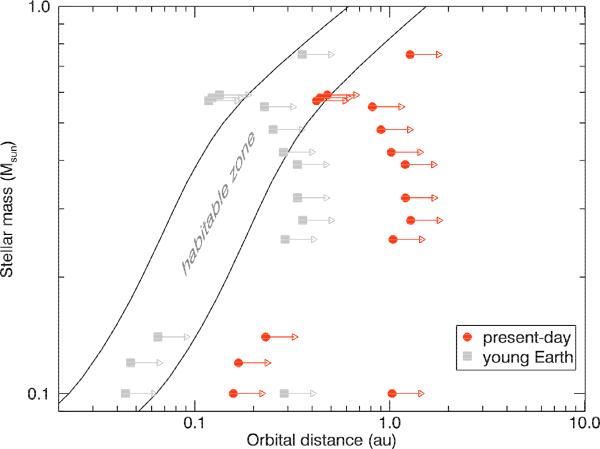Fig. 3

Closest orbital distance at which an Earth-like planet orbiting the stars in our sample would be able to sustain the present-day (red circles) and the young (3.4 Gyr ago, grey squares) Earth’s magnetospheric size, assuming it has the same magnetic field as the Earth. We use a sample of 15 active stars for which large-scale surface magnetic-field maps were reconstructed, to determine the magnetic pressure at the planet orbit and hence the largest extent of its magnetosphere. Planets orbiting at a closer orbital radius would experience a stronger stellar magnetic pressure, which could reduce the size of the planet’s magnetosphere significantly, exposing the planet’s atmosphere to erosion by the stellar wind. For reference, we show the inner/outer edge of the HZ for 1-Gyr-old low-mass stars (solid lines).
Current usage metrics show cumulative count of Article Views (full-text article views including HTML views, PDF and ePub downloads, according to the available data) and Abstracts Views on Vision4Press platform.
Data correspond to usage on the plateform after 2015. The current usage metrics is available 48-96 hours after online publication and is updated daily on week days.
Initial download of the metrics may take a while.


